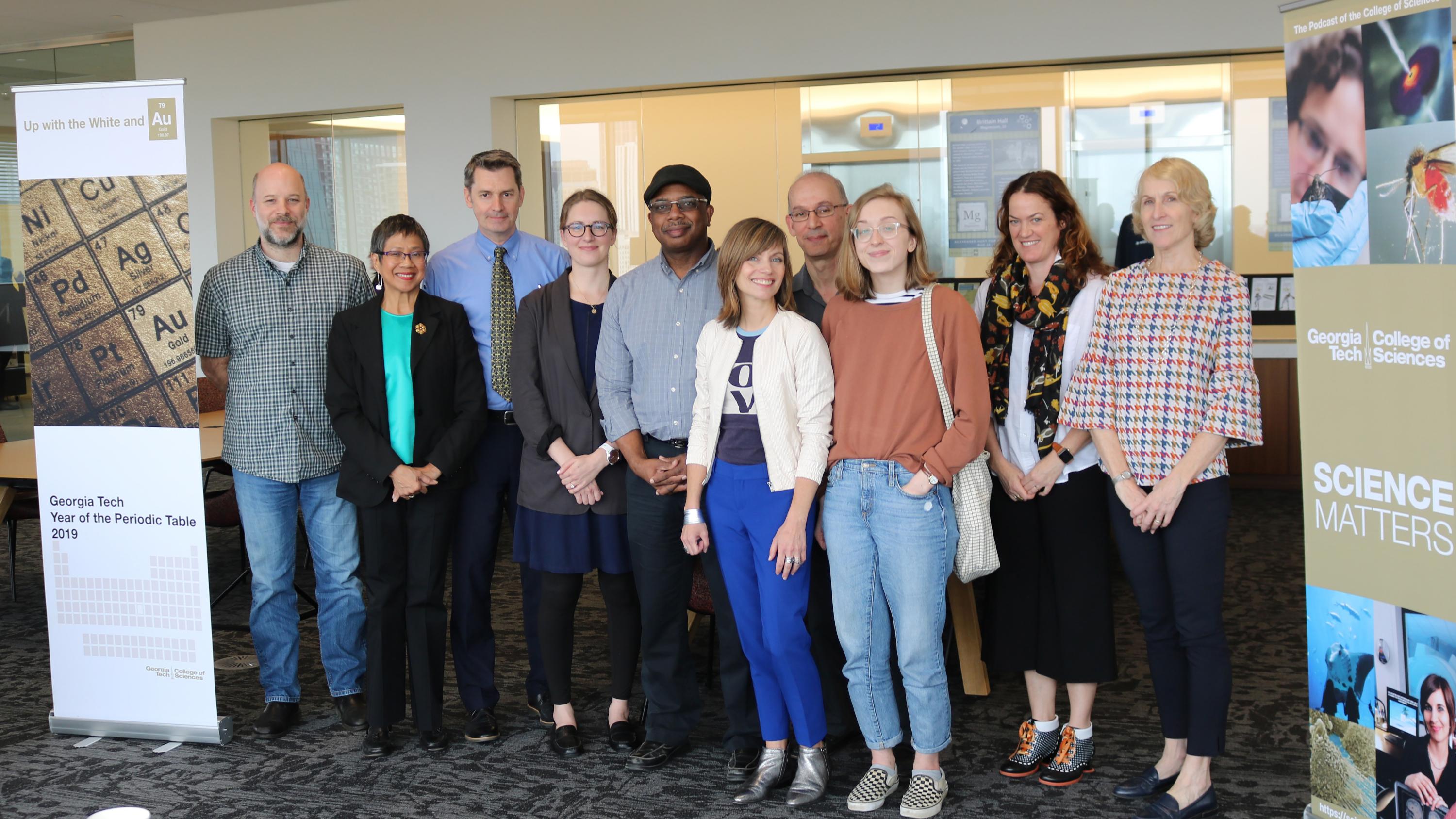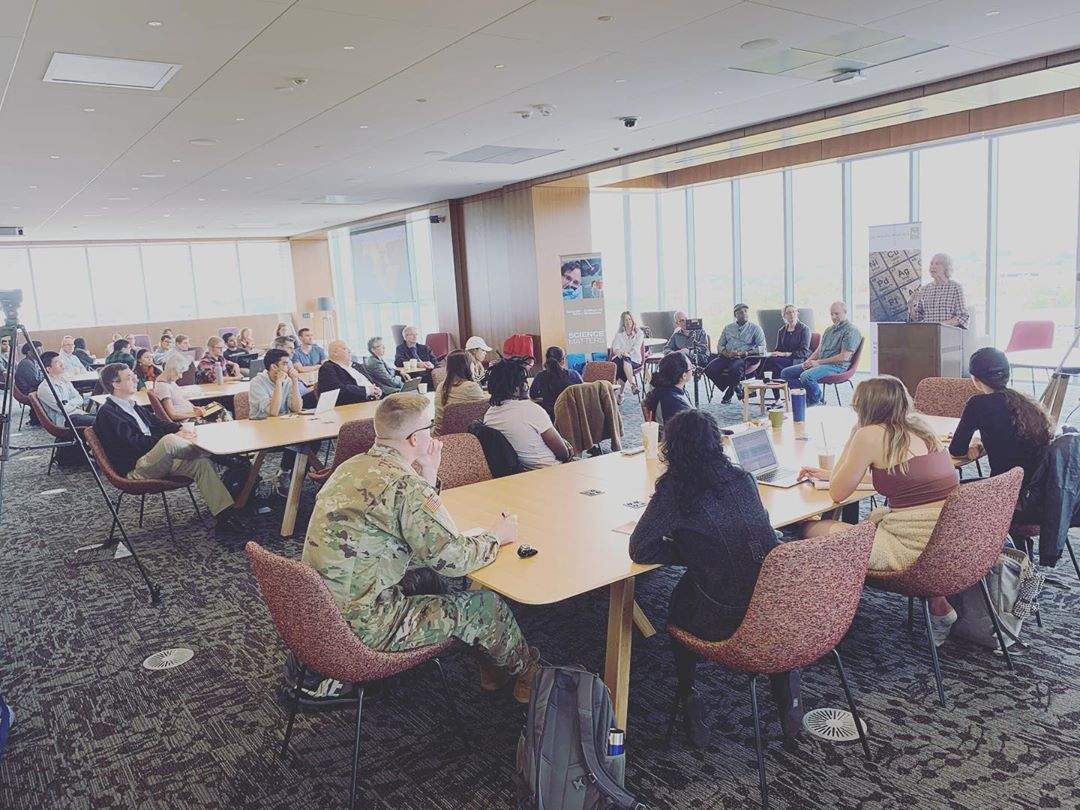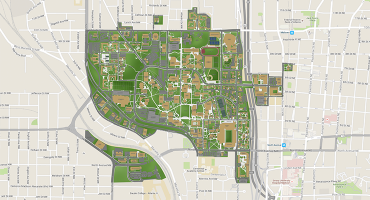The Georgia Institute of Technology caps its yearlong celebration of the International Year of the Periodic Table of the Chemical Elements with “ASTOUNDING ELEMENTS,” an exhibit in Crosland Tower. Formally opened today, the exhibit celebrates elements – real and fictional – and looks back at some events and artifacts from activities led by the College of Sciences.
Following are remarks from College of Sciences Dean Susan Lozier at the opening event:
The periodic table is one of the most recognizable icons in chemistry, perhaps in science as well. With its collection of elements, the periodic table is also a visual metaphor for how science works.
Though attributed to Mendeleev, a 19th-century Russian chemist, he did not conjure the periodic table on his own.
Sam Kean, author of "The Disappearing Spoon and Other true tales of Madness, Love and the History of the World from the Periodic Table of the Elements," wrote that six other chemists independently developed the periodic table, all based on work by an earlier generation of chemists.
Kean suggests that Mendeleev transformed previous “gestures” at how elements should be grouped into the periodic table we know today, much like Homer transformed disconnected Greek myths into "The Odyssey."
But Mendeleev not only reached back, relying on past work, but he looked forward. At the time he arranged the periodic table, 62 elements were known.
What set him apart from others also working on this arrangement was that he left gaps where no known elements would fit, and he also boldly predicted that new elements would be discovered in the years ahead.
This I think is the essence and beauty of science: that it is a collective effort that spans generations.
So, when you look at this periodic table, with the individual elements of hydrogen, helium, gold and silver, think of it also as a metaphor for how we do science. Whatever field of science we are in, we are most all working on individual “elements” that fit into a bigger picture.
And increasingly, as exemplified by this display and this yearlong celebration, scientists are working with designers, writers, artists, to bring this bigger picture to a bigger and bigger audience.
ASTOUNDING ELEMENTS was produced by Maureen Rouhi, director of communications in the College of Sciences; Lisa Yaszek, professor in the the School of Literature, Media, and Communication (LMC); and Kirk Henderson, manager of exhibits at the Georgia Tech Library. Information for the elements in science fiction came from research by Yaszek's student Lily Steele.
Today's opening event also featured a panel discussion between Atlanta-based science fiction writers and scientists. Organized by Yaszek, the discussants were Milton Davis, an Atlanta science fiction writer and chemist; M.G. Finn, a Georgia Tech professor of chemistry; Deirdre Shoemaker, a Georgia Tech professor of Physics; and Amanda Weiss, an assistant professor in the School of Modern Languages and science fiction writer. The conversation revolved around the intersection of science, fiction, and chemical elements. It was moderated by Charlie Bennett, public engagement librarian.
ASTOUNDING ELEMENTS will be on display in Crosland Tower until Dec. 31, 2019. The exhibit has three sections: elements in science fiction in floor 1, periodic table makeovers in floor 2, and periodic-table inspired art in floor 6.
Photo caption
From left: Charlie Bennett, Maureen Rouhi, Kirk Henderson, Amanda Weiss, Milton Davis, Lisa Yaszek, M.G. Finn, Lily Steele, Deirdre Shoemaker, Susan Lozier (Photo by Renay San Miguel)
For More Information Contact
A. Maureen Rouhi, Ph.D.
Director of Communications
College of Sciences




